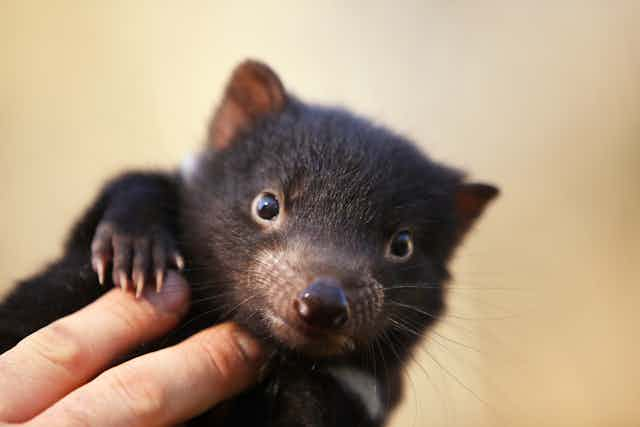You may have heard of Australia’s “Frozen Zoo” – the only facility of its kind on the continent – and that it’s facing funding difficulties. Why should you care about this? Let me explain.
An increasing number of Australian native species are on the brink of extinction, and the Frozen Zoo has a part to play in preventing this.
When it was established in 1995, the zoo – or Animal Gene Storage and Resource Centre of Australia (AGSRCA) to give it its full name – was the world’s first national wildlife gene bank.
And yes, I have a vested interest. I instigated its foundation, along with Professor Alan Trounson and Dr. John Kelly.
Since the AGSRCA began, similar new gene banks have been established across the globe – such as The Frozen Ark which commenced in the UK in 2004, and now leads a global consortium of such biobanks.
Such facilities offer the development of unique technical services to assist in the preservation of endangered and threatened wildlife species.
Gene banks
Gene banks are defined as the systematic and organised collection, processing, storage and future use of biological material. The resources comprise samples of semen, testes, embryos, body tissues, cell lines and stem cells collected from both live and dead animals.
Through advances in assisted reproductive technology, gene banks offer real potential to assist in the genetic management of displaced, dispersed or fragmented populations and the ability save wild and captive populations.
Gene banks have become our insurance policy for the future – a guarantee that, in the case of potential catastrophes (disease outbreaks, fires, floods, wars, climate change), it will still be possible to save our native wildlife species.
What’s the problem?
Despite the best efforts of national and international conservation bodies it’s predicted that at least 30% of all wild land, fresh-water and marine animals will become extinct within 50 years.
The historic record and future for Australian wildlife has been, and continues to be, extremely bleak. This is largely due to increasing human population, feral predators, climate change, habitat destruction, agricultural land use, over-fishing and acidification of the oceans.
There are three equally important or valuable strategies to halt (or try to) this rapid loss of biodiversity:
1) maintain or increase the area of natural habitats (forests, wetlands, rivers and oceans) that offer protected homes to given species
2) collect representative species to be held and bred in captivity, such as in zoos, aquariums, and so on
3) establish and maintain permanent safe reserves of genetic material collected from threatened populations, in genetic banks such as the AGSRCA or The Frozen Ark.
If we accept the chances of safely maintaining all wildlife in its natural habitats are minimal, I would strongly argue we should use all available resources to save as many species as possible.
The optimum conservation-species preservation program integrates habitat protection, management of wild populations and threatening processes, captive breeding and scientific aids comprising the use of assisted reproductive technology and genetic resource banks.
Total collaboration of all resources can achieve a positive result.
Between 1995 and 2006, the AGSRCA centre at Monash University received wildlife samples from throughout Australia and internationally. These included more than 100 species (plus multiple individuals within some species).
Some examples are the northern hairy-nosed wombat, the stitch-nest rat, the bilby, and the grey nurse shark.
Hard times
Since 2006, the Frozen Zoo has been without growth and in hibernation – it has been maintained in maximum security, with its samples stored in liquid nitrogen at -196°C at Monash University.
The AGSRCA was established with Commonwealth funding and was assisted for ongoing research and staff by dedicated volunteers and corporate supporters. The Commonwealth funding came to an end in 2006.
Further attempts to raise funds to maintain and expand the collection have failed. The time has now come to determine the future of this collection, the only one of its kind in Australia.
So, do we close down the gene bank along with the loss of its rare and valuable genetic resources? Or is there another alternative for the collection to remain in Australia?
Australia continues to lose its wildlife species and genetic resources while other countries – including Germany, England, India, America, South Africa and New Zealand – recognise the value of gene banking and assisted breeding technology and are committed to saving their wildlife species for future generations.
For a small input of approximately A$100,000 annually the environment could reap a significant reward. The potential to save even one endangered species such as the Tasmanian Devil would be, to my mind, total compensation.
This is realistic and similar rewards have been achieved in the US and the UK.
Keeping the Frozen Zoo on ice will not be enough to move forward with such important goals.

